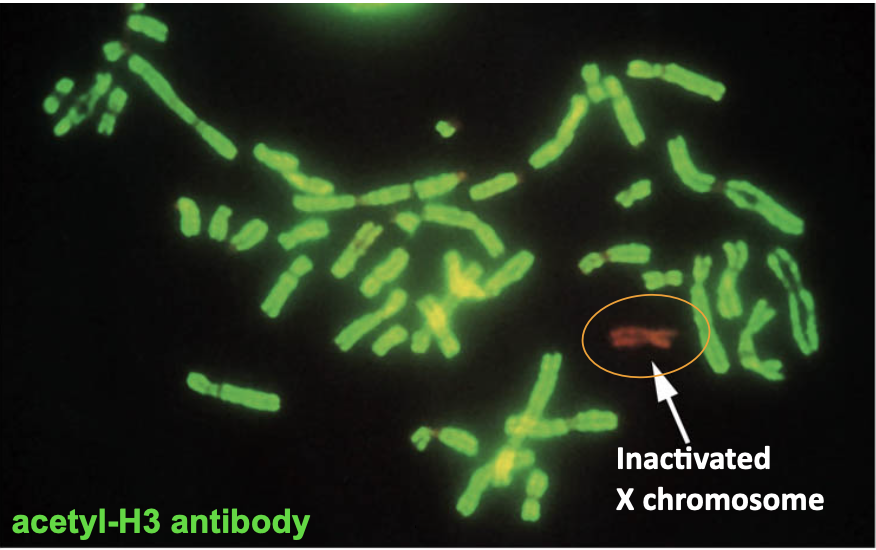Dunn M&C - Eukaryotic Transcriptional Regulation
1/23
There's no tags or description
Looks like no tags are added yet.
Name | Mastery | Learn | Test | Matching | Spaced |
|---|
No study sessions yet.
24 Terms
interphase (euk.)
chromatin can be packaged/condensed differentially — this impacts transcription
chromatin
50% wt DNA and 50% wt protein (histones)
condenses 2m of linear DNA into a ~1μm nucleus
impedes transcription
looped domains is stablized by a protein scaffold
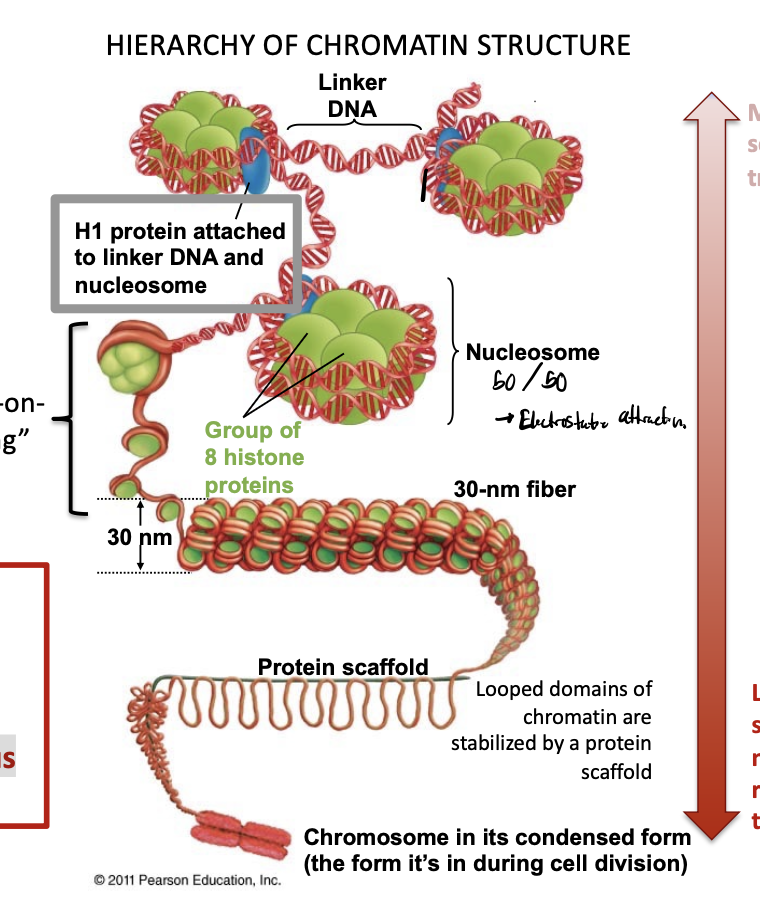
more nuclease sensitive
more transcribable
less nuclease sensitive
less transcribable; more nuclease resistant
histones
proteins that package and compact DNA within the cell nucleus, forming the basic structural units of chromatin
eight of these in a nucleosome

heterochromatin
interphase: type of chromatin; tightly packed and transcriptionally inactive/silent.
e.g, centromeres and telomeres (both don’t contain genes)
associated with deacetylated histones
can be interconverted by enzymes, and nucleosomes can be pushed around relative to the DNA
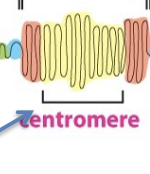
euchromatin
interphase: type of chromatin; loosely packed and transcriptionally active/competent
associated with acetylated histones
can be interconverted by enzymes, and nucleosomes can be pushed around relative to the DNA
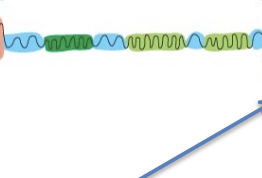
centromeres
used to divide duplicate chromosomes between cells during division
heterochromatin and euchromatin interconverted
chromatin remodeling

eukaryotic chemical mod.
DNA undergoes methylation on cytosine residues within CpG (CG) sequences, the most common chemical modification to DNA in the euk.
CpG methylation
gene promoter region usually brings about heterochromatinization and transcriptional silencing of the gene
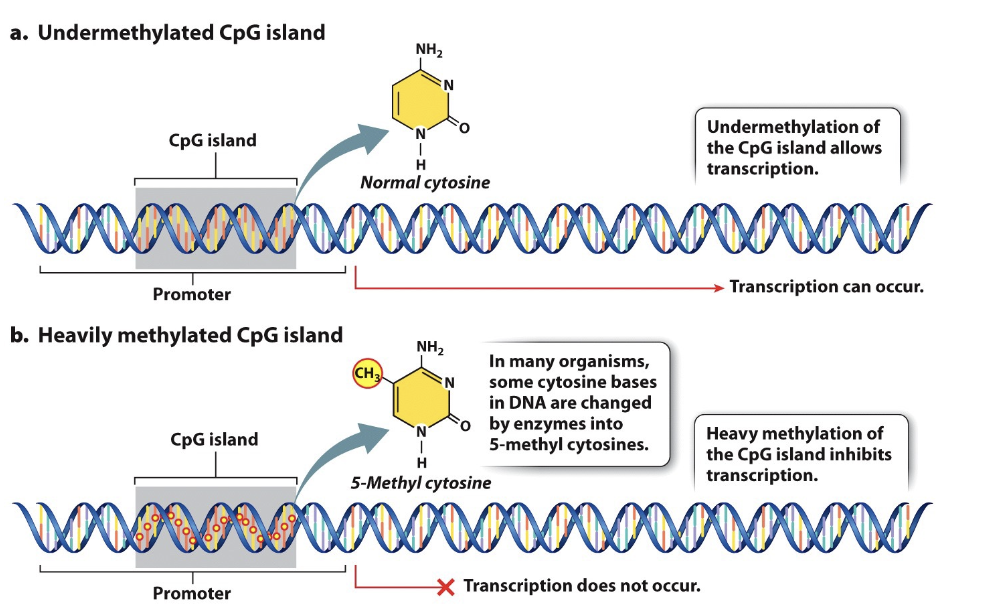
CpG island
a region of concentrated CGs that often occurs near or within a promoter
methylation of a CpG island
Can change over time or in response to environmental cues, providing a way to turn genes on or off.
repression of a gene is often accompanied by heavy methylation of a nearby island
histone tails
protrudes from the nucleosome and undergo post-translational modification, which controls what happens to that DNA
poorly structured “floppy” N-terminal portions of histone proteins
DNA near them is regulated by them
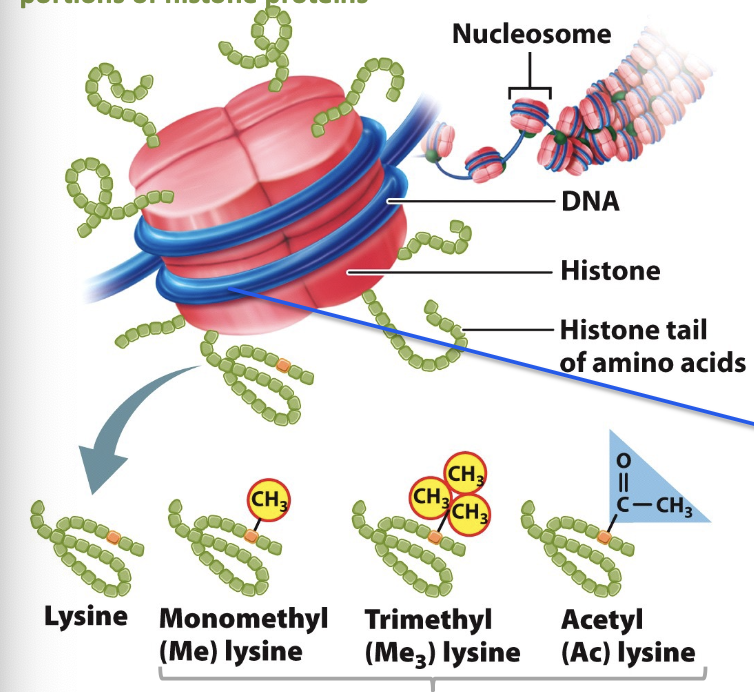
histone modification
can regulate transcription (and any DNA-dependent process) in different ways — sometimes, they influence the way chromatin folds
sometimes recruit a protein that brings about a change, like increasing transcription rate
DNA near the tails is regulated by them
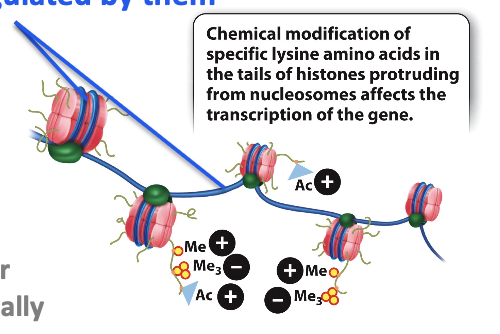
combinatorial control
a transcription factor has its effect based on its combination w/ others
much more extensive in multicellular organisms
e.g, E.coli — regulation of the lac operon by two transcription factors based on two factors— glucose levels and lactose levels
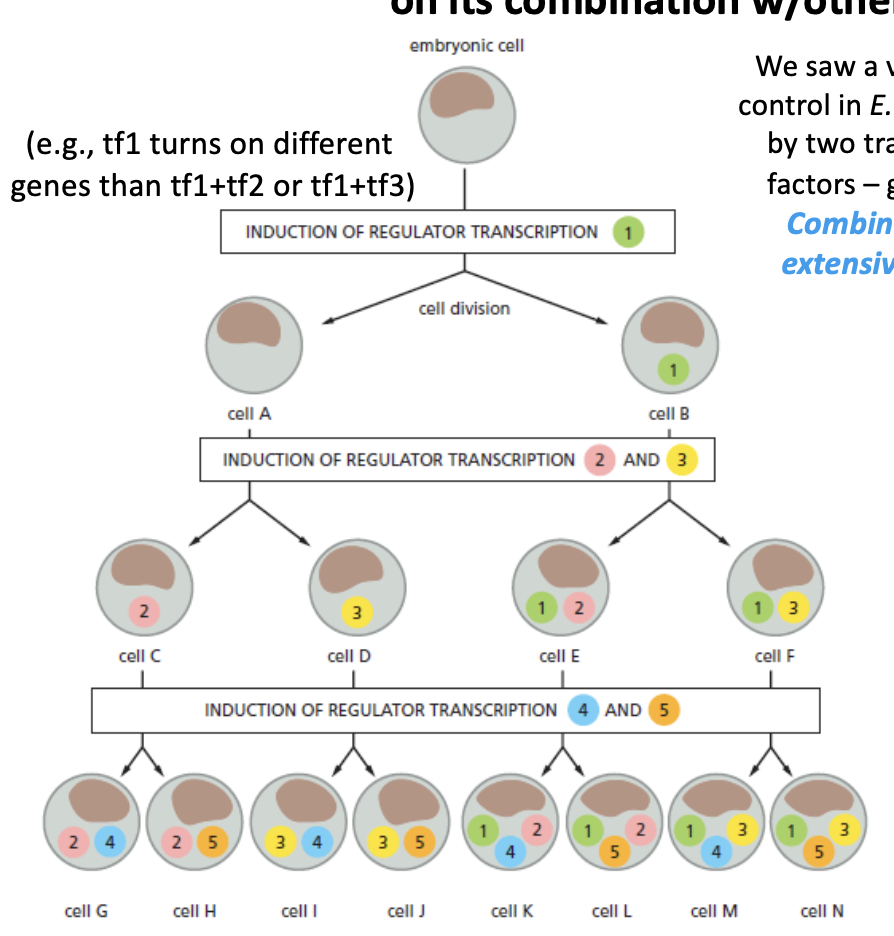
X inactivation
the heterochromatinzation of one X chromosome occurs in XX female mammals as a gene dosage compensation mechanism
dosage of x-linked genes would be 2x as great in females as in males were it not for this dosage compensation mechanism.
x chromosome selected at random
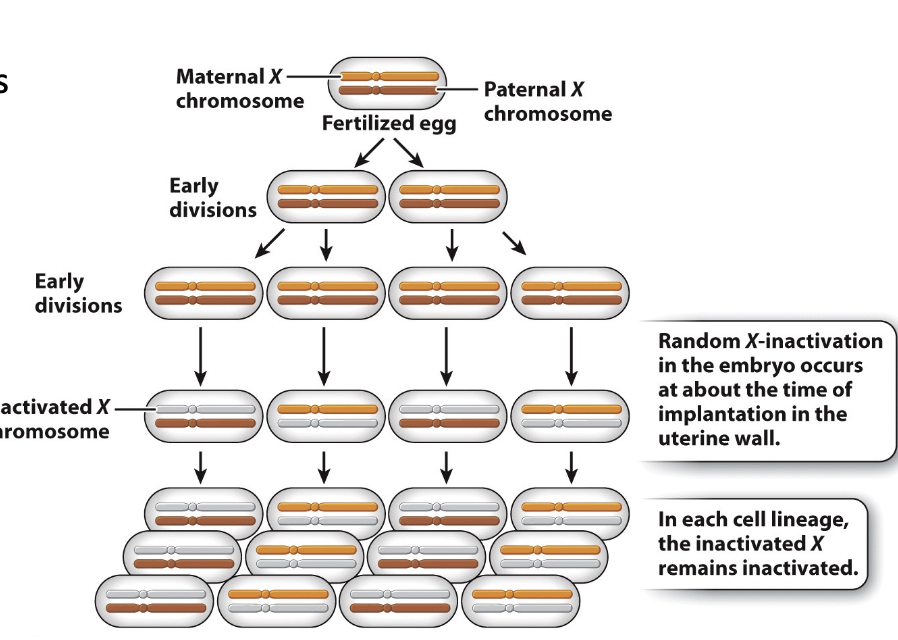
dosage compensation mechanism
the process by which organisms equalize the expression of genes between members of different biological sexes.
Across species, different sexes are often characterized by different types and numbers of sex chromosomes
epigenetic inheritance
cell division continues, the inactive X stays inactive
in each cell lineage, the same X chromosome that was originally inactivated remains inactive
what is being inherited is the silent chromatin state rather than DNA sequence
XX females
mosaics for their X chromosome alleles
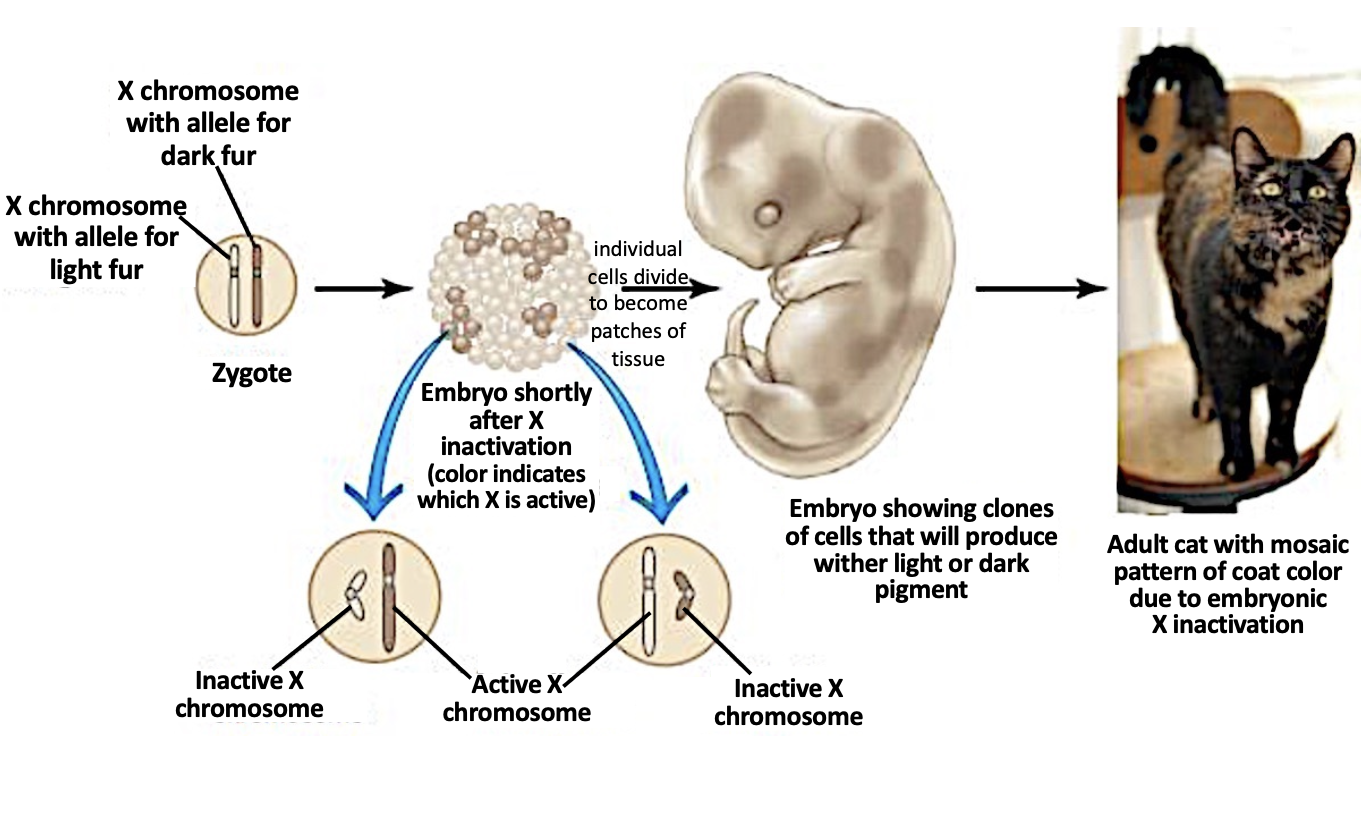
biological mosaic
an organism, like a human, that has two or more genetically distinct cell populations, meaning they have different combinations of chromosomes
non-coding RNA Xist gene
plays a crucial role in X-chromosome inactivation (XCI) in mammals. It's transcribed from the inactive X chromosome.
brings about heterochromatinization
heterochromatinizing enzymes are trans factors
Xist is a cis factor
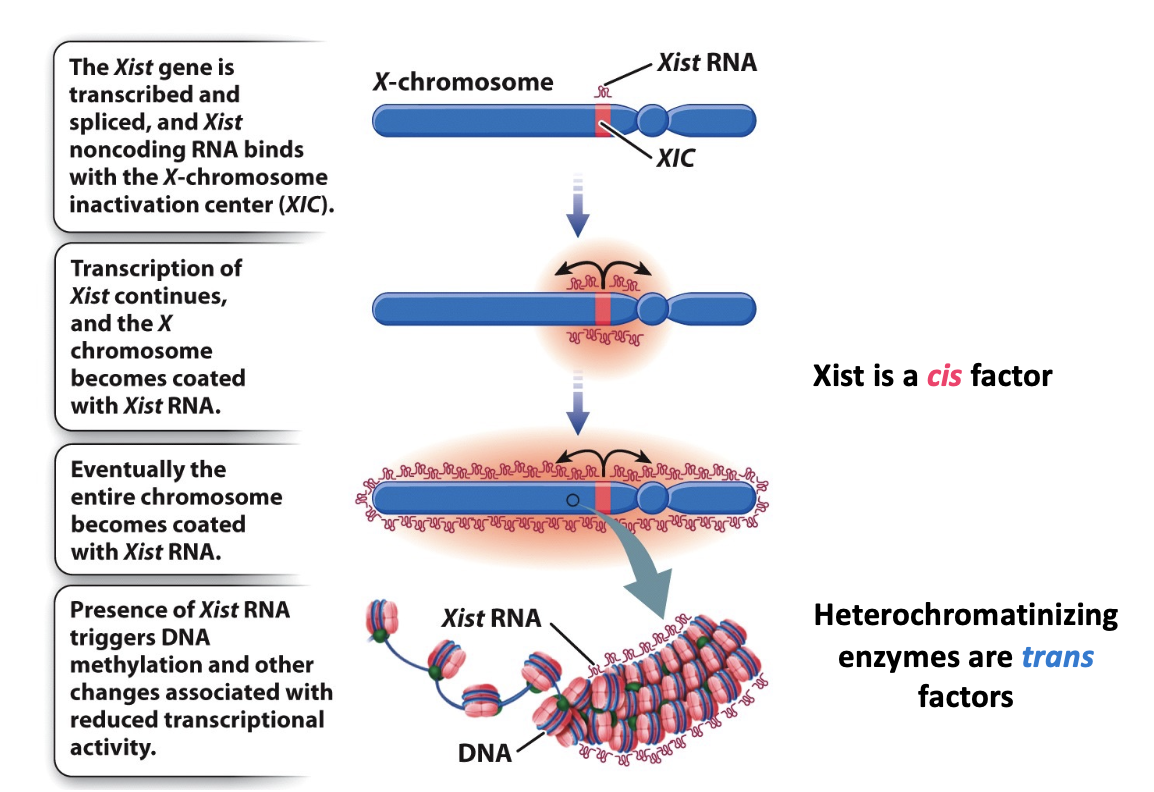
histone acetylation
associated with transcriptionally active/competent chromatin
